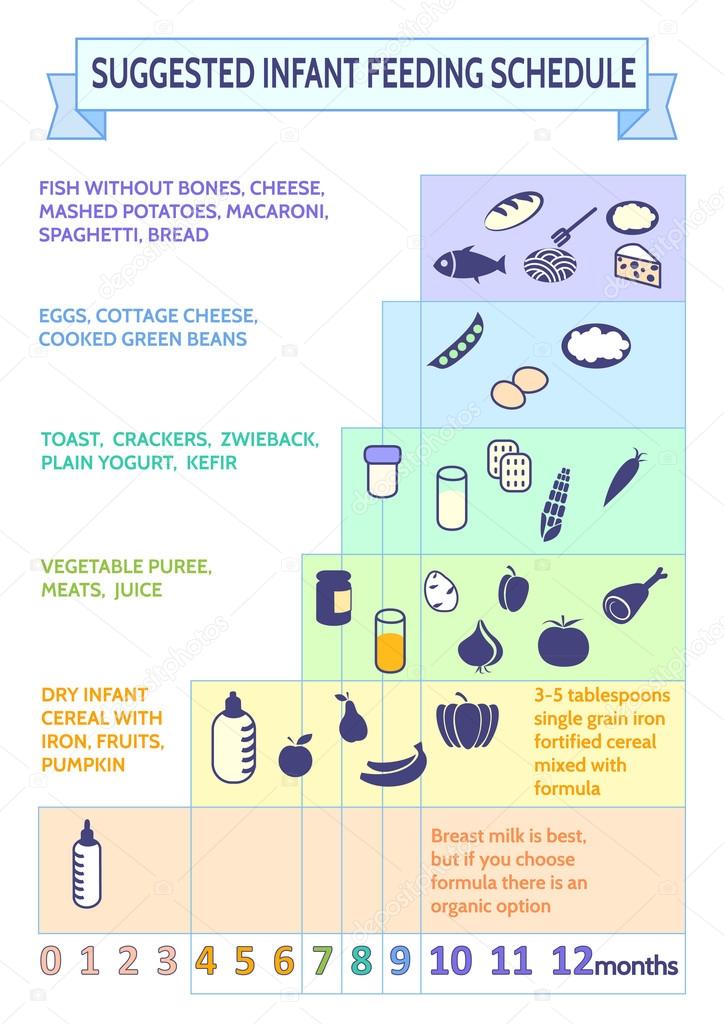Best food for baby iguanas
Best Foods For an Iguana - Iguana Food List
One of the main parts of caring for your iguana is feeding it nutritious staple foods to keep it healthy. In this post, you will find a baby and adult iguana food list, best foods for an iguana, staples and a food chart for iguanas.
Please remember that the red iguana or blue iguana morphs will have the same diet as the green iguana.
As pets, iguanas need a strictly vegetarian diet, to live a long live and prevent issues with kidneys. So your iguana must only eat vegetables, greens, flowers and some fruits.
Your iguana must not eat any form of meat, insects, eggs, cheese, dog food and more. People used to give iguanas meat or bugs to make them grow bigger, especially at a younger age. Offering your iguana meat and bugs will cause kidney failure just after few years of this diet.
Any form of the protein that your iguana needs should come from vegetables. Iguanas also don’t drink much water – so they also get most of the moisture from the food. Dog or cat food to iguanas is dangerous – they are unbalanced in nutrients and high in protein!
How often do iguanas eat?
Iguanas eat 1-2 times a day, but some owners feed their iguanas only once in 2 days. The best practice is to feed your iguana its main meal in the morning, and offer some snacks later in the evening, 3 hours before the sleep, same time every day (iguanas love routines).
Iguana food chart
Your iguana must mainly eat leafy greens – you should offer them every day. Then, with less frequency, you can add other veggies and flowers.
Leafy greens should make up 50-60% of iguana’s diet. Then, 30-40% will contribute to vegetables and flowers. Fruits and berries should only contribute to 10% of your iguana’s diet.
Iguana food chartCa:P ratios, goitrogenic and oxalic foods in iguana’s diet
Please remember that Ca:P ratio is extremely important in iguana’s diet. The best greens, veggies and fruits should contain 2:1 Calcium to Phosphorus, or up to 2. 5-3:1 Ca:P. Phosphorus ratio should never be higher than Calcium. If it is, you must mix them to reach the balance.
5-3:1 Ca:P. Phosphorus ratio should never be higher than Calcium. If it is, you must mix them to reach the balance.
Even the multivitamins that you get must be balanced. Read everything about iguana supplementation in this post.
Foods also must not be high in oxalates (binding calcium) or goitrogenic (binding iodine).
Based on these factors, foods for iguanas are divided to staples, to occasional and rare consumption.
Each day, mix various staples, little bit of fruits and veggies to make a salad. Mix 4-5 types of greens (60%), 1-2 types of veggies (30%), and few pieces of fruits (10%). Don’t forget to alternate veggies, greens, flowers and fruits every day. This will provide varied nutrition.
Even if the fruit is in the staple food list, you must only offer 10% of fruits in iguana’s diet! Same goes to vegetables – 30-40%! Offer greens every day, and mix some staple or occasional veggies, fruits and flowers in the salads! Quantity and frequency is the key.

Please note that the diet for baby and adult iguanas should be the same. Make sure to start offering a variety of greens, veggies and fruits from the beginning. Otherwise, your iguana will become a picky eater.
Let your baby and juvenile iguana eat as much as it wants. But starting from the age of 4-5, reduce the portions a little to prevent obesity.
Best foods for an iguana – staples you can feed daily
- Dandelion greens – both flowers and leaves
- Collard greens
- Turnip greens (offer at least every other day, a bit high in goitrogens).
- Escarole
- Mustard greens
- Squash (grated spaghetti squash, butternut, yellow, Hubbard, gem, Kabocha, acorn).
- Watercress (low in oxalates, 2:1)
- Endive
- Nasturtium (pesticide free flowers and greens – give as a treat or mix in)
- Hibiscus (pesticide free flowers and greens – give as a treat or mix in)
- Snap beans (mix with greens)
- Parsnips (mix with greens)
- Rocket
- Alfalfa
Foods to feed your iguana 2-3 days a week (add some to staples)
- Carrots (avoid carrot tops – high in oxalates)
- Leeks
- Asparagus
- Zucchini (courgettes)
- Prickly pear fruit (cactus leaves)
- Apples (10% of the diet)
- Rose petals (not sprayed with pesticides – give as a treat or mix in)
- Mangoes (10% of the diet)
- Papaya (10% of the diet)
- Melon (10% of the diet)
- Basil (herb – add some to the salad)
- Sage (herb – add some to the salad)
- Thyme (herb – add some to the salad)
- Oregano (herb – add some to the salad)
- Fennel (herb – add some to the salad)
- Peppermint (herb – add some to the salad)
Foods that you can offer your iguana once a week (mix with staples)
Iguanas pay lots of attention to food presentation- they love eating straight from the source! How you present it on a plate also has a big difference- Swiss chard (high oxalate food)
- Spinach (very high oxalate food)
- Bok Choy (goitrogenic)
- Kale (goitrogenic)
- Broccoli (goitrogenic)
- Sweet potatoes (high in oxalates and phosphorus)
- Brussels sprouts (goitrogenic)
- Okra (high in goitrogens)
- Beet Greens and Beetroot (oxalic food)
- Cabbage (goitrogenic)
- Cauliflower (goitrogenic)
- Parsley
- Cucumbers (only good for moisture, chop some pieces in the salad)
- Rutabaga (goitrogenic)
- Tomatoes (oxalic food) (10% of the diet)
- Asparagus
- Lentils
- Celery
- Bell pepper
- Mushrooms (high in phosphorus)
- Raspberries (high in oxalates) (10% of the diet)
- Watermelon (low in nutrition, but high water content) (10% of the diet)
- Peaches (goitrogenic) (10% of the diet)
- Pears (oxalic) (10% of the diet)
- Strawberries (goitrogenic) (10% of the diet)
- Figs (very high in oxalates, give rarely) (10% of the diet)
- Plums (very high in oxalates, give rarely) (10% of the diet)
- Apricots (10% of the diet)
- Blueberries (10% of the diet)
- Blackberries (10% of the diet)
- Grapes (oxalic) (10% of the diet)
- Bananas (very bad Ca:P ratio of 0.
 3:1, give rarely) (10% of the diet)
3:1, give rarely) (10% of the diet) - Kiwi (very high in oxalates, give rarely) (10% of the diet)
You can occasionally offer your iguana some commercial foods like this. But make sure to offer water or spray the food with water (if possible). This is because most of the commercial foods are dry, so they lack moisture.
Avoid oranges, tangerines, grapefruits, pineapples, lemons, limes – all citrus fruits.
Do not feed lettuce to your iguana – they are very low in nutrition.
Avoid feeding bread, cooked rice, pasta – stick to the vegetarian diet.
Never feed avocados – they are toxic. You can find a full list of toxic and non-toxic plants, fruits and vegetables for your iguana in this post.
Also, you can find the full guide to iguana’s supplementation in this post.
What is more, you will find the guide to feeding iguanas, different rules and tips in this post.
Related posts:
Black, Brown, White, Yellow Spots on Iguana - Reasons and Tips
Toys For Pet Iguana, How To Play and Have Fun With An Iguana
Iguana Health Issues And Diseases
Heating, Lighting And Humidity In Iguana’s Vivarium
Breeding Iguanas, Making a Nest Box And An Egg Incubator
Best Food For Iguanas And What Can They Eat (Food List)
Are you wondering what to feed your pet iguana?
Or maybe you’re still trying to decide if an iguana is a suitable pet for you, and you want to find out what iguanas eat so you know how to care for one in the future?
If so, this article is for you.
We’re uncovering the best food for iguanas, sharing some helpful background information on green iguanas (the most popular pet iguana), and giving you some insider tips on feeding your pet iguana.
Iguanas are herbivores, specifically folivores (leaf eaters), so the best food for iguanas is dark green leafy vegetables. However, they also enjoy other non-leafy vegetables, fruits, flowers, and commercial iguana food.
Table of Contents
About Iguanas
Before we dive into explaining the best food for iguanas, we need to become better acquainted with these fantastic lizards.
We’ll first uncover the various species of iguanas and learn which type is the most popular iguana found in captivity (your pet iguanas is most likely a member of this species), discover where this species comes from and what their life is like in the wild.
The Various Iguana Species
There are over 35 different species of iguanas in the world today.
Yep, you read that right, 35! Iguana species live everywhere from the Galapagos Islands to Arizona, thriving in everything from ocean-side homes and rainforest-rich areas to desert regions.
The most popular and common iguana in the Americas and the pet industry today is the Green Iguana (often just called the iguana).
So chances are, if you have a pet iguana, it’s a Green Iguana.
Green Iguanas Background
Green iguanas are native to an extensive rainforest range.
They live in the wild in the rainforests of northern Mexico, the Caribbean Islands, southern Brazil, and Central America.
Green iguanas are arboreal creatures, meaning they are tree-dwellers.
They live most of their lives up in the canopy of rainforest trees, typically only coming down to mate, lay eggs, and move to a different tree.
Green iguanas are large lizards, sometimes growing as long as 7′ feet in length (from snout to tip of tail) and weighing up to 20 pounds.
What Do Green Iguanas Eat in the Wild
To better comprehend your pet iguana’s food needs, it’s important to understand iguana’s dietary habits in the wild.
Green iguanas are herbivores, meaning they subsist on a diet of plants; however, on rare occasions, green iguanas in the wild have been known to eat eggs, leaf-dwelling insects, and snails.
Because of their tree-dwelling nature, green iguanas live primarily on plant foods found up in the trees, like leaves, fruits, and flowers.
Still, their specific geographical residence (and the foods available there) dictates what types of plants the green iguana eats.
For example, green iguanas in Panama love feeding on the abundantly growing wild plums found in Panama forests.
Best Food For Iguanas
Now that we know a little more about green iguanas (the most popular pet iguana species), including where they live and what they eat in the wild, let’s discover the best iguana food for your pet iguana.
Leaves
As mentioned above, green iguanas are herbivores, specifically folivores (or leaf eaters).
They live primarily on a diet of leaves from vines and trees in the wild, with some fruits, plants, and flowers mixed in.
But what about captive iguanas?
This may come as a surprise, but your pet iguana still has the same dietary needs and preferences as iguanas living in the wild!
It’s important to provide your pet iguana with a diet closely mimicking the nutritious, herbivorous food it enjoys in the wild.
With this in mind, one of the essential foods to feed your captive iguana is dark green, leafy vegetables.
These types of vegetables should make up about 80-90% of your iguana’s diet.
Iguana-friendly leafy vegetables include:
- beet greens
- mustard greens
- dandelion greens
- collard greens
- turnip greens
- alfalfa hay or chow
- bok choy
- kale
- Swiss chard
- red or green cabbage
- clover
- kohlrabi
- watercress
- savory
- cilantro
In general, stay away from fiber-rich, vitamin- and nutrient-deficient light green vegetables like iceberg lettuce, celery, and romaine lettuce.
These vegetables are mainly fiber and water and contain very little nutrient value.
Another thing to note is the light-colored inner parts of many vegetables are less nutritious than the darker, green leaves on the outside.
The primary goal here is to ensure your iguana has as much nutrient-rich food as it can get.
Other Vegetables
Many other non-leafy vegetables are also great food choices for captive iguanas.
These are served raw or cooked, although raw is the better choice as more nutrients are retained.
Just make sure you don’t rely on non-leafy vegetables too heavily and neglect to give your iguana the leafy, rich-green foods it needs to thrive.
Vegetables your iguana will love include bell peppers, green beans (and other beans), and broccoli.
Though safe and healthy for your iguana, the following vegetables should make up a smaller percentage of its diet than the previous ones mentioned.
These include squash, cactus, cooked sweet potato, cucumbers, asparagus, mushrooms, shredded carrots, peas, okra, parsnips, and corn.
Fruit
Iguanas enjoy eating fruit; however, fruit should only be given sparingly and should never make up a large portion of an iguana’s diet since it is generally mineral-poor.
Consider giving your iguana fruit as a treat once or twice a week or sprinkling small amounts (as a dressing of sorts) on top of its other food.
Iguana-friendly fruits include bananas (with skin), grapes, apples, star fruit, pears, tomatoes, kiwis, peaches, guava, melons, and mango.
Other particularly healthy fruits your iguana will enjoy are apricots, raspberries, strawberries, dates, and figs (for their high calcium levels).
Flowers
In the wild, iguanas eat flowers, so providing flowers now and then as treats is a good idea.
Flowers like carnations, dandelions, hibiscus, geraniums, and roses are excellent choices.
Grow these yourself at home, or purchase them from a flower shop (although you will need to make sure no chemicals were ever sprayed on the flowers or put in the flower’s water).
Commercial Foods
Although your captive iguana needs a diet primarily (80-90%) made up of fresh leafy greens, vegetables, and fruit, it is helpful to supplement this with a commercial-made iguana food source.
Some of our favorites include:
- Rep-Cal Adult Iguana Food
- Exo Terra Soft Adult Iguana Food
- Zilla Juvenile Iguana Fortified Daily Diet
Rep-Cal Adult Iguana Food, 2.5-Pound
- Rep-Cal adult iguana food is formulated to ensure proper growth and health by providing complete and balanced nutrition
- Veterinarian recommended food containing natural plant and fruit ingredients iguanas love and provides 100-percent complete daily nutrition they need
- Tested successfully for adult iguanas (more than 12-inch long from nose to base of tail) by reptile veterinarians
View Price On Amazon
Deals on Chewy
We earn a commission if you click this link and make a purchase at no additional cost to you.
A Word on Animal Protein
Some captive iguanas may enjoy eating animal protein food sources like live crickets, pinky mice, mealworms, and even table food.
However, these are not necessary to their diet and are considered by many to be poor dietary choices for iguanas, so it’s best to stay away from these foods entirely or offer them only infrequently.
Never feed your iguana dog or cat food as it contains too much fat and Vitamin D.
Things to Remember When Feeding Your Iguana
Iguanas do not chew their food, so make sure you always cut up their fruits and vegetables into bite-size pieces they can easily swallow so they don’t choke (especially for baby iguanas).
Give your iguana a healthy portion of fresh leaves and vegetables every day, and if they consume it all, give them some more.
If any food is left over in their cage the next day, discard it.
Baby iguanas will require more food and may need to be fed up to 3 times a day.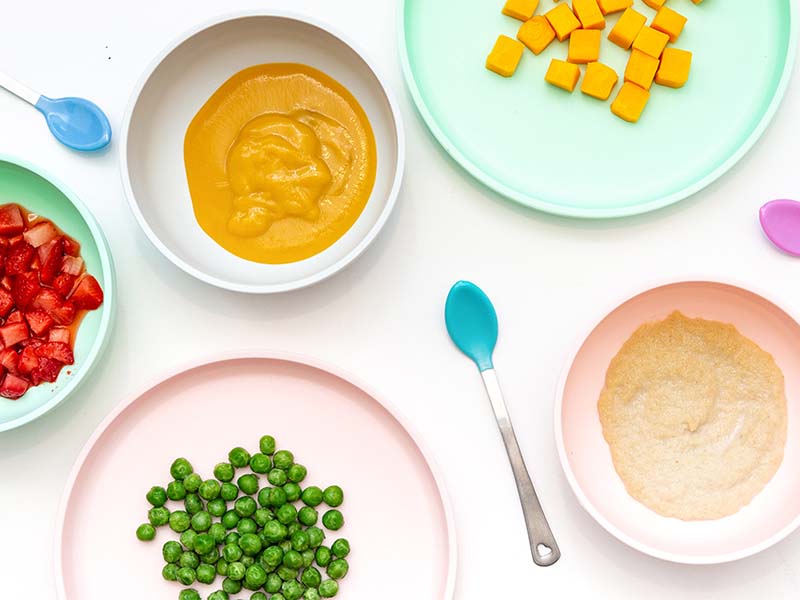
Conclusion
So there you have it! The best food for iguanas is dark green leafy vegetables.
These should make up about 80-90% of their diet.
Other vegetables iguanas enjoy are carrots, asparagus, bell peppers, and cucumbers.
Some fruits and commercially made iguana foods are used to supplement and add variety to their diet.
We hope you found this article helpful and feel better equipped to feed your pet iguana properly!
Iguana green at home. Domestic green iguana
In the wild, iguanas feed exclusively on plant foods. Neither mature nor young individuals require animal protein. If you offer it to a pet, the lizard will not refuse, it will even grow more intensively. But this is fraught with diseases of the gastrointestinal tract, impaired bone tissue metabolism, kidney stone disease, which will subsequently affect the life expectancy of the reptile.
The iguana's stomach is not adapted to the digestion and assimilation of animal protein . Veterinarians around the world advise sticking to the diet that a pet usually finds in its natural environment. A lizard at home should receive calcium and phosphorus in a 2: 1 ratio only from plant foods.
Veterinarians around the world advise sticking to the diet that a pet usually finds in its natural environment. A lizard at home should receive calcium and phosphorus in a 2: 1 ratio only from plant foods.
The most suitable iguana food consists of:
- 1. Green plant parts:
- Dandelion.
- Beet greens. nine0016
- Mustards.
- Chicory.
- Clover.
- Alfalfa.
- Hibiscus.
- Mulberries.
- Prickly pear cactus without thorns.
- Rose petals and leaves.
- Nasturtiums.
- Tradescantia.
- Dahlia leaves and flowers.
2. Vegetables:
- Pumpkins.
- Zucchini.
- Cucumber.
- Tomato.
- Radishes.
- Sweet pepper.
- Peas with leaves. nine0016
- Green beans.
3. Berries and fruits:
- Rowan.
- Strawberries.
- Raspberries.
- Currants.

- Apples (pitted).
- Pear
- Fig.
- Grape.
- Watermelon.
- Melons.
- Mango.
- Avocado.
- Papayas.
- Prickly pear flowers and fruits.
- Bananas as a treat (in small quantities and rarely).
4. Croup:
- Oatmeal.
- Bran.
- Rice.
- Buckwheat.
Cereals are steamed without salt. As a supplement to plant foods, iguanas should be offered calcium, which is sold in pet stores, with their food. They are sprinkled with crushed food for mature individuals 1-2 times a week, and for young ones - 3 times a week.
Certain types of plants are undesirable or harmful to the health of the iguana:
- Iceberg lettuce (little nutritional value). nine0016
- Spinach (slows down calcium absorption).
- Cabbage: white cabbage, Brussels sprouts, kohlrabi (inhibits the absorption of iodine).
Give your iguana lots of sunlight.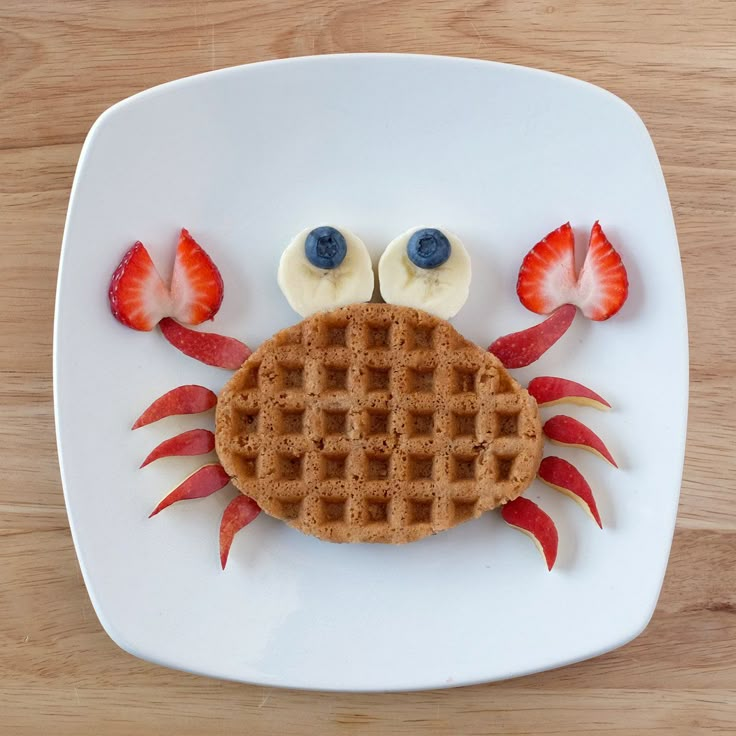 Iguanas need plenty of natural light to absorb UVB and UVA rays. Spectrum A ultraviolet affects the general health and mood of the reptile, and spectrum B rays allow the iguana to digest food, absorb vitamin D and calcium, which is necessary to prevent bone metabolism disorders. The best source of ultraviolet A is the sun and natural room lighting. Spectrum B rays can be obtained using fluorescent lamps. For the health of an iguana, you will need at least one such lamp. Replace it at least once every six months. nine0004
Iguanas need plenty of natural light to absorb UVB and UVA rays. Spectrum A ultraviolet affects the general health and mood of the reptile, and spectrum B rays allow the iguana to digest food, absorb vitamin D and calcium, which is necessary to prevent bone metabolism disorders. The best source of ultraviolet A is the sun and natural room lighting. Spectrum B rays can be obtained using fluorescent lamps. For the health of an iguana, you will need at least one such lamp. Replace it at least once every six months. nine0004
Keeping your iguana warm is important. These reptiles live in warm climates (in Central and South America) and are not accustomed to the cold. It is also necessary to fix a special lamp for heating the iguana. The average daily temperature should be 28-32 degrees Celsius. Set up the lamp and see how the iguana reacts to the suggested temperature. If she tries to stay near the lamp all the time, the temperature should be increased, and if the reptile does not approach the lamp, the temperature should be lower. At night, the temperature should be lowered to 25 degrees. In order to be able to change the temperature, attach a dimmer to the bulb and turn the wheel. Iguanas are cold-blooded, so they cannot regulate their own body temperature. When they are hot or cold, they move to a colder or warmer place. Fix the lamp so that the iguana cannot touch it, as this can cause burns. Don't use heated terrarium stones because they are dangerous, although they look pretty. nine0004
At night, the temperature should be lowered to 25 degrees. In order to be able to change the temperature, attach a dimmer to the bulb and turn the wheel. Iguanas are cold-blooded, so they cannot regulate their own body temperature. When they are hot or cold, they move to a colder or warmer place. Fix the lamp so that the iguana cannot touch it, as this can cause burns. Don't use heated terrarium stones because they are dangerous, although they look pretty. nine0004
Prepare a home for the iguana. You will need a large cage or terrarium. The aquarium will be too small even for a baby iguana. This reptile needs a cage that is at least 1.8 by 1.8 by 0.9 meters so that it can move freely.
Branches should also be secured as iguanas like to climb on them. Remember that iguanas grow very fast. Buy a humidifier to be able to control the humidity.
Feed your iguana the right food for him. These reptiles eat vegetables and fruits, so give your iguana a variety of green leafy vegetables and he will be healthy. It is recommended to feed the iguana cabbage, clover, dandelions, watercress, romaine lettuce. Iguanas don't eat iceberg lettuce! These reptiles also love other vegetables, including peas, parsnips, pumpkins, and zucchini. For treats, give the iguana grapes, strawberries, raspberries, and slices of whole grain bread. Don't be afraid to feed your iguana a special prepared food - it will provide your pet with all the nutrients he needs, but it will not replace vegetables and fruits, so it is best to combine these foods. Iguanas also need fresh and clean drinking water. nine0004
It is recommended to feed the iguana cabbage, clover, dandelions, watercress, romaine lettuce. Iguanas don't eat iceberg lettuce! These reptiles also love other vegetables, including peas, parsnips, pumpkins, and zucchini. For treats, give the iguana grapes, strawberries, raspberries, and slices of whole grain bread. Don't be afraid to feed your iguana a special prepared food - it will provide your pet with all the nutrients he needs, but it will not replace vegetables and fruits, so it is best to combine these foods. Iguanas also need fresh and clean drinking water. nine0004
Recently, breeding or keeping exotic animals at home has become extremely popular. Therefore, today it is quite often possible to meet the rarest representatives within an ordinary apartment. One such animal is the domestic iguana.
What kind of animal is this
The domestic iguana is a favorite of many pet breeders of this kind. This is a lizard that lives in the American open spaces. Prefers a tropical climate in coastal areas, close to flowing rivers. The iguana grows up to two meters and can weigh about 5 kg. On the back of the lizard there is a crest inherent in this species, which extends to the middle of its powerful tail. Near the iguana's throat is a specific bag of skin, which tends to swell. Young representatives of lizards are green in color, but with age their shade becomes darker. nine0004
The iguana grows up to two meters and can weigh about 5 kg. On the back of the lizard there is a crest inherent in this species, which extends to the middle of its powerful tail. Near the iguana's throat is a specific bag of skin, which tends to swell. Young representatives of lizards are green in color, but with age their shade becomes darker. nine0004
How long does a domestic iguana live
Iguanas can live up to 15 years, and possibly more. However, most lizards do not live that long, the main reason is the wrong diet, or not maintaining the right temperature. Therefore, before getting such a pet, it is best to think carefully about everything, since such a decision will require a large investment of money, effort and time.
Iguana housing at home
Domestic tropical lizard will do best in a 200 liter glass terrarium. At the end of the year, your beautiful pet will need to increase the area of \u200b\u200bthe dwelling to 500 liters. In most cases, wooden houses are made for adults, in which the front wall is made of glass, but they are also quite satisfied with an ordinary glass terrarium. nine0004
nine0004
For proper air circulation it is necessary to cover the terrarium with a 10 mm stainless steel mesh, as well as make the same holes in the side walls of the terrarium. In order to maintain the desired temperature, it is necessary to use incandescent mirror lamps, or use ceramic heaters at night. To create the desired consecration, it is necessary to purchase special lamps that are designed for reptiles, and they must be closed with a grate. Their service life is 7 months, after which they need to be replaced. Without ultraviolet radiation, the tropical lizard will not be able to get vitamin D, as well as calcium. nine0004
In their natural habitat, lizards warm up their bodies with the help of sunlight, otherwise the food they eat will not be digested properly. Therefore, the iguana at home is heated by a heat source for a couple of hours, and only then eats food.
Iguana Care Features
In order for a pet iguana to develop fully, it is necessary to provide it with warming places. It would be better to place a snag in the terrarium directly under the mirror lamp. For this area, the temperature should be 32-35°C. However, it will be necessary to create cooler places in the terrarium so that the lizard can cool its body. In most cases, this is the corner, on the opposite side of the lamp, in which it is necessary to provide a temperature of 25-26 ° C. In the dark, iguanas need a climate of 22-28 ° C, but young individuals will be quite satisfied with 24 ° C. nine0004
It would be better to place a snag in the terrarium directly under the mirror lamp. For this area, the temperature should be 32-35°C. However, it will be necessary to create cooler places in the terrarium so that the lizard can cool its body. In most cases, this is the corner, on the opposite side of the lamp, in which it is necessary to provide a temperature of 25-26 ° C. In the dark, iguanas need a climate of 22-28 ° C, but young individuals will be quite satisfied with 24 ° C. nine0004
Another nuance in keeping an iguana at home is the level of humidity. The terrarium should be sprayed with water several times a day, or the necessary devices for humidification should be installed. Improper humidity and temperature conditions can have a detrimental effect on your pet, therefore, they must be observed without fail.
Iguanas are tree dwellers, so thick branches should be placed in the terrarium to bring them closer to their natural environment. As a decoration, ropes, plastic greenery, as well as a house for an iguana, corresponding to its size, can serve. For flooring in a terrarium, you can safely use tree bark, white paper, a plastic pallet, and more. Fillers that can crumble should be excluded, since during the absorption of food, the iguana is able to swallow part of the flooring, which will eventually have a bad effect on its health. nine0004
For flooring in a terrarium, you can safely use tree bark, white paper, a plastic pallet, and more. Fillers that can crumble should be excluded, since during the absorption of food, the iguana is able to swallow part of the flooring, which will eventually have a bad effect on its health. nine0004
In the lizard's dwelling, it is necessary to put some kind of container where she can swim. You can also sprinkle your pet with water, which should have a temperature of 30 ° C. Bathing should be given the most attention when your pet is shedding. If there is not enough moisture, the iguana's skin can be damaged, and the molt itself will take place with great difficulty.
Features of feeding and taming domestic lizards
To maintain cleanliness and disinfection, it is necessary to remove the waste products of the lizard daily, and once a week, carry out a complete cleaning of the terrarium. nine0004
After you bring your new occupant home, your pet will be stressed for several days. It is also not worth taking it in your hands, since you can inflict psychological trauma on the animal, first you need to let it get used to it, and only then tame it.
It is also not worth taking it in your hands, since you can inflict psychological trauma on the animal, first you need to let it get used to it, and only then tame it.
The iguana should be fed in the morning, immediately after he has warmed his body under a heat source. It is better to get rid of everything that your pet has not consumed after 3-4 hours so that the remains do not provoke the appearance of bacteria. The drinking bowl should always be filled with clean water. nine0004
The main rule for feeding lizards is the presence of food of plant origin, as well as the use of the right amount of phosphorus and calcium.
Tropical lizards are not carnivores, there is no need for food of animal origin. The main products are fruits, vegetables, herbs, and a small amount of grains. From the category of vegetables, you can give almost everything, but be extremely careful when introducing spinach, cabbage, beets, and celery into the diet. Oatmeal, buckwheat, boiled rice bran and germinated grains are suitable as food for iguanas. nine0004
nine0004
Iguanas receive the necessary amount of phosphorus and calcium from special mineral supplements, the lack of which can adversely affect the development of your pet. The dimensions that a one-year-old tropical lizard-domestic iguana should normally have are 25 cm excluding the tail, and 35-40 cm at the age of 2.5 years.
The iguana should be tamed slowly and slowly. First, she needs to get into the habit of having you around her. It should be noted that a tree lizard can scare you with its inflated bag of skin in the throat area, and can also open its mouth at you. However, when your pet iguana is completely used to you, it will become an indispensable exotic friend for a long time. nine0004
Like this article? Take it to your wall, support the project!
More and more people, when choosing a pet, pay attention to iguanas. They have a number of advantages over the usual cats and dogs: they have neither wool nor fluff, they do not need to be walked or endure endlessly annoying meowing, they practically do not smell and do not cause allergies.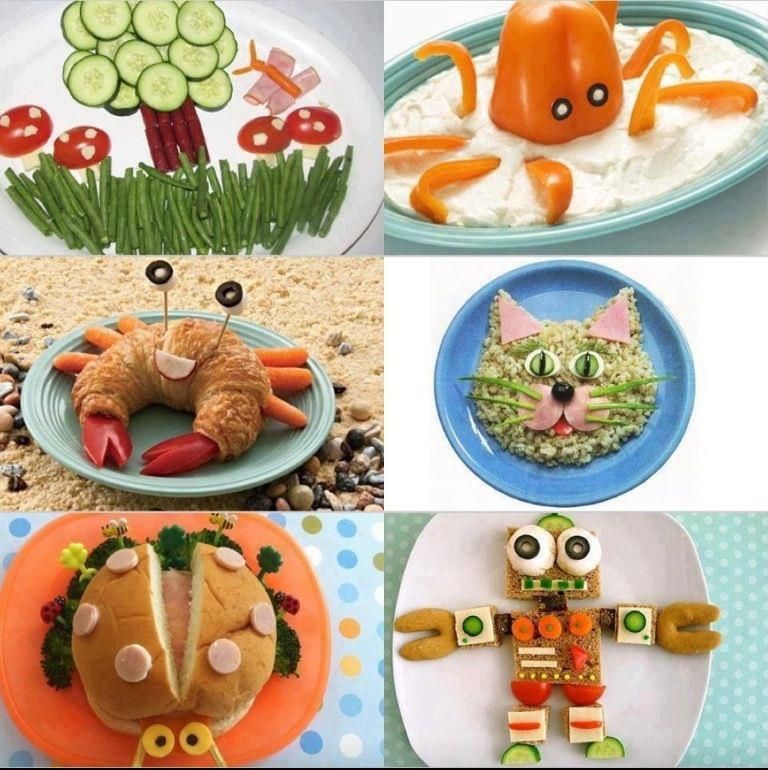 Among other things, the content of the iguana speaks of the originality of the owner, his unusual taste and courage. What you need to know about keeping an iguana at home? nine0004
Among other things, the content of the iguana speaks of the originality of the owner, his unusual taste and courage. What you need to know about keeping an iguana at home? nine0004
What to look for when buying an iguana
Usually buyers first of all try to find out the gender and age of the baby. It is not so easy to answer this question. If the seller confidently names the birthday of a small iguana, then most likely he is lying. In captivity, iguanas usually do not breed, and in nature, iguanas hatch in late spring and early summer. So if in March you are offered a three-month-old iguana, do not believe the seller.
The situation with sex determination is even more complicated. It is impossible to say this unequivocally before reaching the age of puberty, and iguanas become “adult” only by one and a half years. nine0004
Some signs can determine the state of health of an iguana. Carefully observe the iguana, its color, appearance. The color of the iguana should be bright, a dull color usually indicates a disease, more often a fungal one.
Take the lizard in your hands, gently pull the throat fold down - the lizard will open its mouth. The mouth should be pink and the tongue should be red. The pallor of the tongue and mouth indicates a lack of calcium. Sometimes a lack of calcium is also evidenced by some softening of the lower jaw, swelling. These defects can be corrected over time with proper care. nine0004
There should be no tumors or swelling on the paws and fingers. Sometimes there are no claws on the fingers, usually, if the base is not damaged, the claw grows over time. The condition of the crest and tail can also tell about the health of its owner. Dry and darkened "limbs" indicate the wrong content: some errors in nutrition, lack of moisture or cold.
Examine the anus. The remains of feces are also a bad sign. However, this may indicate the uncleanliness of the seller, who does not care for his live goods. nine0004
There is one more thing that everyone who wants to buy an iguana should be aware of. Most individuals are carriers of salmonella, while they themselves may not get sick with salmonellosis. A yellowish rash on the body indicates the presence of the disease. If there are small children in the house, be sure to take the animal's feces for examination to identify possible infections.
Most individuals are carriers of salmonella, while they themselves may not get sick with salmonellosis. A yellowish rash on the body indicates the presence of the disease. If there are small children in the house, be sure to take the animal's feces for examination to identify possible infections.
Animal Terrarium
A lizard needs its own home - a terrarium. And not so much so that the iguana could hide from real or imaginary danger, but in order to create ideal conditions for it, as close as possible to the natural environment. In nature, iguanas live in tropical forests, where humidity approaches 100%, temperatures range from 25 to 28 degrees Celsius and the sun shines much more often than it hides in clouds. nine0004
Optimum temperature is maintained with either incandescent or ceramic lamps. The lamps must be positioned so that the lizard cannot reach them and get burned. An adult iguana should not cool below 20 degrees, a cub - 22 degrees. However, excessive overheating is also unsafe. A temperature of 40 degrees is critical for these animals; at higher temperatures, the iguana will die.
A temperature of 40 degrees is critical for these animals; at higher temperatures, the iguana will die.
An important point in keeping an iguana is the sun. Ultraviolet light must be provided to the lizard by special UV lamps. You can't skimp on this equipment. The sun of our middle zone will not be enough for tropical inhabitants, and the glass of the terrarium will absorb even the little that the winter sun gives. With a deficiency of ultraviolet radiation, iguanas will not absorb calcium, and its deficiency will lead to disruption of metabolic processes and the rapid death of the animal. When choosing a lamp, pay attention that the lamp gives light of spectrum A and spectrum B - this is the best combination. nine0004
It is important to maintain high humidity in the terrarium. Moisture is necessary for the health of the iguana's skin, helping to shed. Among other things, moisture enters the body of the lizard through the skin, which means that the presence of water in the terrarium should be significant. Experts insist that the humidity in the terrarium should not be below 80%.
Experts insist that the humidity in the terrarium should not be below 80%.
Provide moisture by arranging pools, waterfalls, injection and ventilation systems. Usually, the design is adjusted through trial and error, experimentally reaching the optimal combination of equipment to ensure sufficient humidity. nine0004
The terrarium must always be vertical. While the iguana is small, then the house for it can be small: 60 cm long, 80 cm high. By the age of two, the animal stops growing - and it becomes noticeable that the lizard has grown out of the nursery terrarium. An adult animal needs a terrarium up to 120 cm long, 80 cm deep, and 170 cm high. It is better if other pets do not have access to it, it will not be a walk-through room, quiet, calm, without loud sounds, drafts. At first, when you just brought the lizard home, reduce the "bride", do not rush to show everyone your purchase. For a lizard, moving is stressful, and if it is constantly pulled out of the terrarium, to which it has barely had time to get used, the animal can get sick.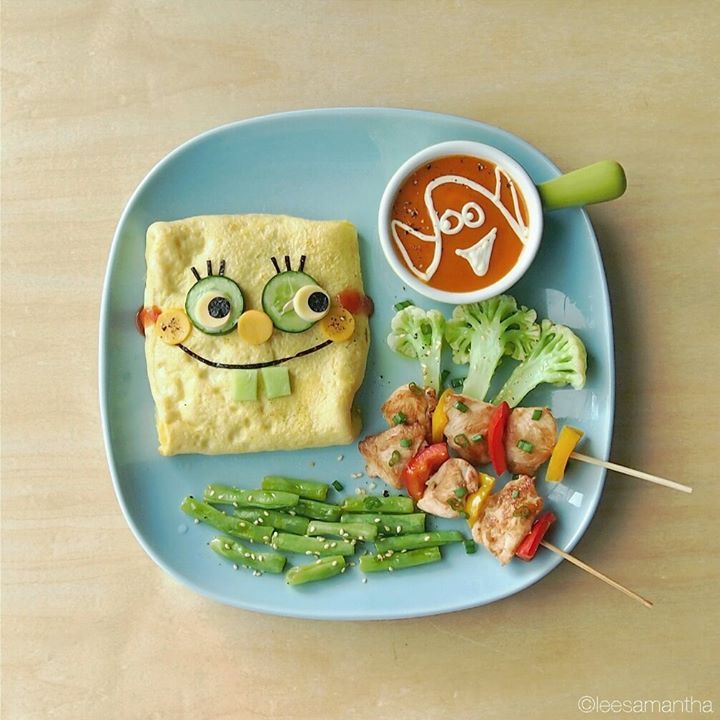 nine0004
nine0004
What to feed an iguana
The iguana is a vegetarian. All attempts to feed a lizard with meat can lead to sad results. There is a certain opinion that lizards can sometimes eat insects, which means that they need to be fed with protein food. This opinion is erroneous, say veterinarians. The digestive system of lizards is designed to digest plant foods. Therefore, when some "breeders" begin to feed lizards with meat (chicken, dog food, fish), they do this to achieve a specific goal - faster growth of lizards, which means their higher price. However, such animals die very quickly - by the age of four or five. nine0004
The basis of the diet of iguanas should be salads and greens (70-80%), vegetables (15%) and fruits (10-15%). It is important that the greens are rich in calcium. In fact, such salads can easily be found in the park or grown in the country. Clover, dandelions, gout, spinach, lettuce, parsley, beet tops, turnips, radishes - all this will go well in the diet of an iguana. Perfectly complement the diet of alfalfa, rich in calcium and protein.
Perfectly complement the diet of alfalfa, rich in calcium and protein.
From vegetables, you should stop your choice on broccoli, green beans, peas (and the pods and leaves of young peas are used), carrots and radishes. The iguana will not refuse figs, citrus fruits, currants, blueberries, blackberries. But do not abuse fruits, they can only "decorate" the lizard's diet. nine0004
Zucchini, pumpkin, cauliflower and savoy cabbage, apples, kohlrabi, strawberries, corn and many other fruits and vegetables can become the same “decoration”. What else does the iguana eat? You can sometimes pamper your little animal with cereals: buckwheat and oatmeal, bran. Many iguanas are happy to feast on indoor plants, terrifying home flower growers.
Walking with an iguana
Sometimes it's worth letting the iguana "walk" around the apartment. Of course, under mandatory supervision. So your property will be safer, and the iguana herself will not be able to harm herself, for example, by “eating” a wire or going out a “walk” out the window. nine0004
More and more people prefer exotic animals to familiar cats and dogs. One of the most popular unusual pets is the iguana, a herbivorous tropical lizard.
Before you decide to get yourself an iguana, you need to know that, firstly, this animal belongs to an endangered species and is included in the CITES list, and secondly, caring for an iguana will require a lot of effort and material costs from you. On average, an iguana lives 15-20 years, but due to the improper care of many negligent owners, the life of lizards at home is reduced by 5 or even 10 times . There is little literature on the care of iguanas and veterinarians who know their nature well, information has to be collected bit by bit. Therefore, care for an iguana at home should be as close to ideal as possible, without experimentation and personal innovation. nine0004
Terrarium: size, arrangement, temperature, humidity
At home, the iguana is kept in a terrarium. You can get her out of there for communication, swimming, walking, but the main place of residence is a terrarium.
It is in it that it will be possible to maintain the necessary temperature and humidity for the iguana, in normal room conditions the animal will not survive. The iguana grows up to 1.5-2 meters in length, so the "house" must correspond to its size, and it must move calmly along it. nine0004
In addition, the terrarium should have three areas with different temperatures: in one corner (side) there is a place where the lizard is heated, where the temperature should be about 30 degrees. Usually, a branch or snag is placed for the iguana, along which it rises to the lamps and warms itself there - the first thermometer must be placed in this zone. Heating is regulated by the power of the lamps, very powerful lamps that heat up during operation must be covered with a metal mesh so that the lizard does not get burned. Lamps can be used conventional, but better with a UV spectrum. nine0004
The second thermometer is placed in the same warm area, but at the bottom or diagonally from the lamp, it should show an average temperature of 26-27 degrees.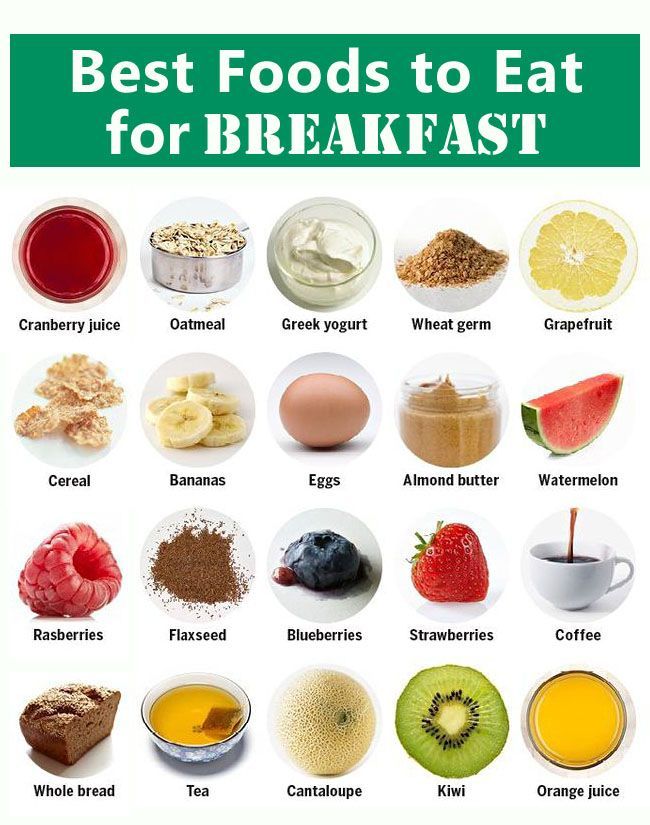 And the third is placed in the farthest cool corner - there should be at least 25 degrees.
And the third is placed in the farthest cool corner - there should be at least 25 degrees.
A quarter of the area must be given to a reservoir - the lizard can drink from it, it also maintains the desired humidity. .
The bottom is lined with a rug, paper napkins are placed on top, and dense, large bark is placed on them. Change napkins daily, wash the rug and bark with warm water. The drinking bowl-reservoir is cleaned twice a week, and once a month a general cleaning of the terrarium is carried out, with its disinfection. The iguana does not tolerate the lack of water, therefore, along with the pool, it is reasonable to put an ordinary drinking bowl in the terrarium and change the water in it every day. nine0004
iguana care
The iguana needs to be washed and bathed. Water gives her the opportunity to increase the moisture of the skin, as well as quickly shed dead skin, shed. You can bathe the lizard in a regular bath, for this, some object is placed on the bottom so that she can climb on it while washing. The water temperature should be between 30-35 degrees. Bathe your iguana regularly once a week or once every two weeks.
The water temperature should be between 30-35 degrees. Bathe your iguana regularly once a week or once every two weeks.
Iguana food
In the wild, the iguana feeds mainly on plant foods. Sometimes cases of eating carrion, insects and even small rodents are described. But at home, it is worth adhering to an exclusively vegetarian diet; with appropriate nutrition and vitamin supplements, the iguana will not lack any vitamins and minerals. nine0007 But the desire to please a pet with unusual food can lead to a deterioration in the condition of the animal , a disease that is not so easy to recognize at first glance and, accordingly, provide the necessary veterinary care.
The iguana's teeth are small, the jaw is not very mobile, the lizard does not know how to chew its food thoroughly, so all the vegetables are grated for it. They feed the iguana in the morning, in the evening - it’s not worth it, this can adversely affect its digestive tract. Food is given from the feeder or from the hands, after a while the uneaten food is removed - at high temperatures it quickly deteriorates, can poison the animal, and the smell from it is not the most pleasant. nine0004
nine0004
The basis of the diet should be fresh vegetables, herbs and fruits . It can be beans, legumes, asparagus, corn, any cabbage, avocado, bell peppers, carrots, tomatoes, potatoes, cucumber, lettuce, parsnips, bananas, apples, pears, papayas, mangoes, berries, grapes, melons and watermelon.
In percentage terms, the iguana's diet looks something like this: up to 70% - vegetables and herbs, up to 15% - fruits, up to 10% - grain supplements. It is advisable to make the iguana's daily menu as diverse as possible so that it contains 5-10 types of products. nine0004
Calcium is an important dietary supplement for the iguana, because it grows very fast and grows 5 times in a year. It is necessary for the proper and healthy growth of cartilage and bones, with a lack of it, the animal grows slowly, the tail becomes uneven, and fractures occur. This mineral in the form of calcium gluconate, chalk, eggshell is not suitable if there is no "living" sun, more precisely ultraviolet and vitamin D3, it is absorbed only in combination with it.
Iguana behavior. How to tame an iguana nine0149
Iguanas have a calm nature, sometimes so much so that it is difficult to understand whether your pet is pleased or furious. It is better to accustom a young individual to hands; it is very difficult to get along with an adult wild animal.
Talk to the iguana in a calm, not loud voice . You can’t shout at her, beat her, make sudden movements.
A disgruntled iguana may swing its tail or bite, so it is better to use gloves when dealing with wild, young, aggressive individuals. A sick lizard can escape from the hands, but soon it will lose strength and “freeze”. Do not hold the iguana against its will, sudden movements can lead to fractures, as well as increased aggression. nine0004
It is worth accustoming the animal to feeding, light stroking, bathing. Before you touch the animal, it should get used to you a little, understand that you are always there, clean up its territory, bring clean water and food. The manual iguana behaves calmly, allows himself to be stroked, held in his arms, he can climb up his arm on his shoulder and sit there.
The manual iguana behaves calmly, allows himself to be stroked, held in his arms, he can climb up his arm on his shoulder and sit there.
Fried cheesecakes with herbs, cheese and garlic
Fried cheesecakes with herbs, cheese and garlic
Iguana: feeding and maintenance - CityVet 9 veterinary clinics0001
- Accommodation
- Lighting
- Water
- Temperature
- Humidity
- Bedding
- Diet
- Handling
- Iguanas and other domestic animals
- Treatment
Iguanas are one of the most popular lizards kept as pets. In nature, these reptiles live alone in tropical rainforests in a very limited area, converging with a partner only during the rutting season, which usually occurs in the summer. Males are distinguished by a brighter and more patterned color. The average life span of a green iguana in captivity is 15 years. With careful care and proper feeding, these reptiles can live up to 20 years. However, they require different conditions of detention than furry animals, which we will discuss below. nine0004
However, they require different conditions of detention than furry animals, which we will discuss below. nine0004
Accommodation
Do not allow the iguana to roam the house. Otherwise, the following will happen: your house will be destroyed, and the iguana will be injured. Most often, a lizard breaks its tail. Most often, the tail then grows back, but it will never look as beautiful. Also, the iguana can swallow small objects, which only a surgeon can subsequently remove. Well, and besides, a long stay outside the cage will negatively affect the temperature state of your animal, it may become cold. nine0004
An iguana needs a large and spacious terrarium or a polyurethane or glass cage. It should be borne in mind that iguanas can reach a length of 1.80 m and a weight of 8 kg. The terrarium should be about three times the length of the lizard itself. You should not choose a wire house: many iguanas have a habit of rubbing their noses against the bars and injuring themselves.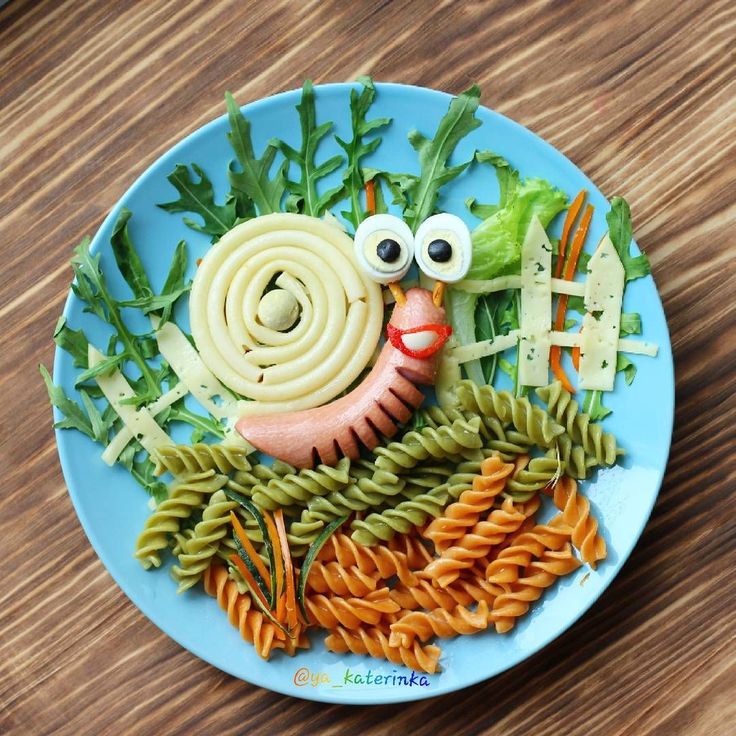 The cage should be cleaned at least once a week, but more often is better. When cleaning the terrarium, never use soap, liquid cleaner, etc. One chemical smell can kill your iguana. You can clean the cage only with a sponge or cloth dipped in warm water. As a last resort, use baking soda. nine0004
The cage should be cleaned at least once a week, but more often is better. When cleaning the terrarium, never use soap, liquid cleaner, etc. One chemical smell can kill your iguana. You can clean the cage only with a sponge or cloth dipped in warm water. As a last resort, use baking soda. nine0004
Be aware that iguanas carry Salmonella bacteria. For the animals themselves, they are not harmful, but can cause a serious eating disorder in humans. Be sure to wash your hands with soap after every contact with your pet.
Lighting
In the wild, iguanas spend much of their time basking in the sun. Sunlight is essential for the production of vitamin D, which iguanas require just as much as humans do to produce calcium in their bodies. Therefore, UV lamps can become an analogue of sunlight. However, your iguana needs a few hours a week, if possible, to be in natural sunlight. With the lamp timer, you can create a 12-hour day and 12-hour night for your pet. nine0004
Water
In nature, iguanas always live in close proximity to water, so it is very important to provide the lizard with enough clean water for drinking and washing. Iguanas just love to swim and can do it for hours. Bathing helps them moisturize the skin, exfoliate the skin scales and remove bacteria from under the nails.
Iguanas just love to swim and can do it for hours. Bathing helps them moisturize the skin, exfoliate the skin scales and remove bacteria from under the nails.
Temperature
Improper temperature in the iguana's cage interferes with digestion, suppresses the lizard's immune system and can lead to lethargy. The temperature should be within 30-35 °C. At night, the temperature should not fall below 23.4 °C. As a heating device, you can use a conventional 60-watt incandescent lamp. nine0004
Humidity
Iguanas need high humidity. Try to keep your pet's cage at 65-75% humidity. An ordinary hygrometer will help you determine this level. Spray the cage and the lizard itself more often with a spray bottle. Place small water containers, decorative fountains in the cage - this will also help maintain the required level of humidity. If your home is very dry, you may want to use a humidifier as well.
Mat
The bedding in the cage should be changed daily, as it can be used small and large coconut. Stay away from corncobs, sand, rocks, earth, sawdust, bark, newspaper, or cat litter: all of these materials your iguana can accidentally swallow and cause harm to himself.
Stay away from corncobs, sand, rocks, earth, sawdust, bark, newspaper, or cat litter: all of these materials your iguana can accidentally swallow and cause harm to himself.
Diet
Iguanas are herbivores. They really like finely chopped kale, lettuce, Chinese cabbage, chicory, arugula, mustard and turnip tops, dandelions, hibiscus. Small amounts of chard and spinach can be given. You should never offer your iguana animal protein: this lizard's digestive system is not designed to digest animal protein, which can kill your pet. Also, store-bought fruits are not always useful - they have too high a sugar content. Small amounts of banana, apple, mango or papaya can sometimes be given. Sprouted sprouts of beans, alfalfa, radishes are very useful. Try to diversify your iguana's menu as much as possible. Existing dry food for iguanas still cannot replace natural products, no matter what they say on the packages, so you can use such food as a top dressing. nine0004
Young iguanas should be fed small meals several times a day.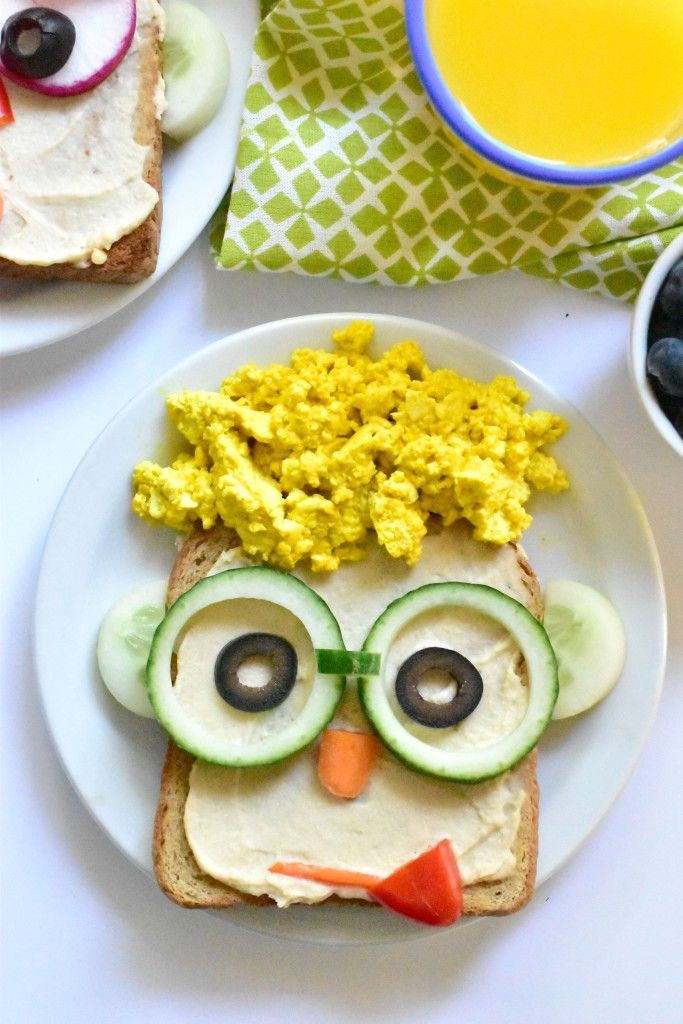 Adult iguanas (greater than 26 cm in length) every other day. Start feeding after turning on the daylight, and your pet will warm up a little after sleeping. Be sure to change the water every day and remove any leftover food.
Adult iguanas (greater than 26 cm in length) every other day. Start feeding after turning on the daylight, and your pet will warm up a little after sleeping. Be sure to change the water every day and remove any leftover food.
Multivitamins and calcium should also be added to the iguana's diet. In Russia, such drugs as Reptilife (Agrovetzashchita), Reptolife (Tetra), Wordley (Calcium and Multivitamin) are common. nine0004
Message
To tame an iguana, it must be handled frequently and regularly. Iguanas quickly learn to show affection to their owners. It is advisable to pick up young lizards 2-3 times a day for about 15 minutes. Stroke his back and neck, let your iguana get used to being picked up. It is very important to remember that these reptiles can be aggressive in situations they consider dangerous for themselves: when their food is attacked, their territory is attacked, during the mating season. They can bite quite painfully, as well as use extremely sharp claws.











